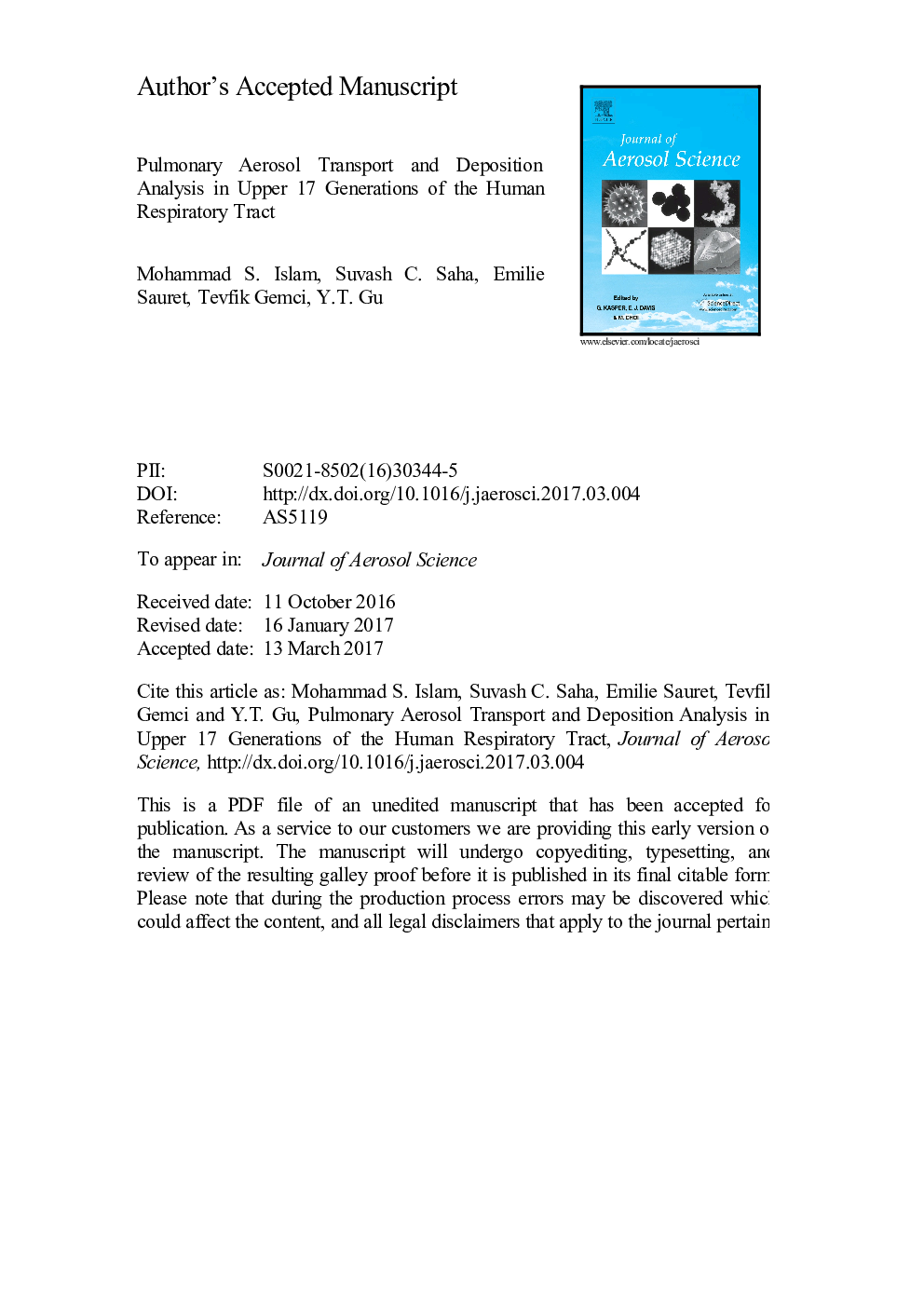| کد مقاله | کد نشریه | سال انتشار | مقاله انگلیسی | نسخه تمام متن |
|---|---|---|---|---|
| 5753991 | 1620715 | 2017 | 27 صفحه PDF | دانلود رایگان |
عنوان انگلیسی مقاله ISI
Pulmonary aerosol transport and deposition analysis in upper 17 generations of the human respiratory tract
ترجمه فارسی عنوان
تجزیه و تحلیل حمل و نقل آئروسل ریه در 17 ژن بالا از دستگاه تنفسی انسان
دانلود مقاله + سفارش ترجمه
دانلود مقاله ISI انگلیسی
رایگان برای ایرانیان
کلمات کلیدی
مسیرهای هوایی تراکئو برونشیل، رسوب آئروسل ریه، درمان با آئروسل سم شناسی استنشاق، تحویل مواد مخدر،
موضوعات مرتبط
مهندسی و علوم پایه
علوم زمین و سیارات
علم هواشناسی
چکیده انگلیسی
The major problem in understanding the therapeutically targeted drug delivery system in the deeper airways of the human lung is the lack of adequate data of particle transport and deposition (TD) in the transitional and respiratory zones (deeper airways) of the human lung. An understanding of the morphometry of the pulmonary airways and the lungs forms the primary step in a study of pulmonary aerosol deposition. The present study is the first-ever approach to explore the pulmonary aerosol TD in a digital 17-generation human pulmonary airway model. The present numerical study achieved the lack of the particle TD data in the deeper airways of the human lung. This paper presents a 3-D (3-dimensional) CFD (Computational Fluid Dynamics) study of an anatomically realistic 17-generation lung bronchial tree model based on the high-resolution computer tomography (HRCT) data by Schmidt et al. (2004). Physical morphometry is necessary for sufficiently calculating air and particle dynamics in human pulmonary airways with available data on a large number of generations. A Lagrangian-based Discrete Phase Model (DPM) is used to study the particle TD in the 17-generation of the lung airways. The numerical results demonstrate that inertial impaction is dominant in the upper airways and a large percentage of particles is deposited in the upper airways. The numerical results also illustrate that a large percentage of smaller diameter particles leaves through the airway outlet boundary at the 17th generation irrespective of breathing patterns. The escaped particles are considered to continue to follow the airway flow field further downstream after the 17th generation till the 23rd generation and some of them will reach the alveolar sacs region. This computational model could potentially aid in overcoming the nanobiotechnology toxicity problem for drug delivery in the deeper airways.
ناشر
Database: Elsevier - ScienceDirect (ساینس دایرکت)
Journal: Journal of Aerosol Science - Volume 108, June 2017, Pages 29-43
Journal: Journal of Aerosol Science - Volume 108, June 2017, Pages 29-43
نویسندگان
Mohammad S. Islam, Suvash C. Saha, Emilie Sauret, Tevfik Gemci, Y.T. Gu,
